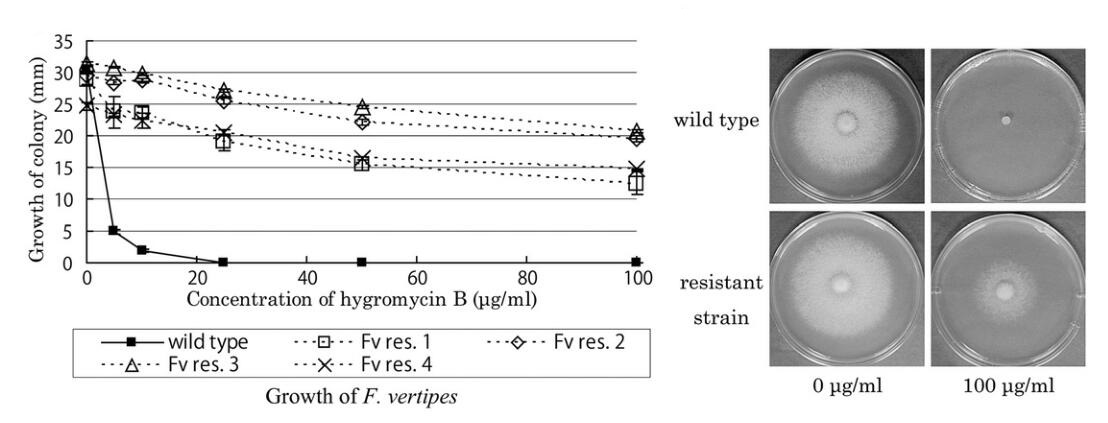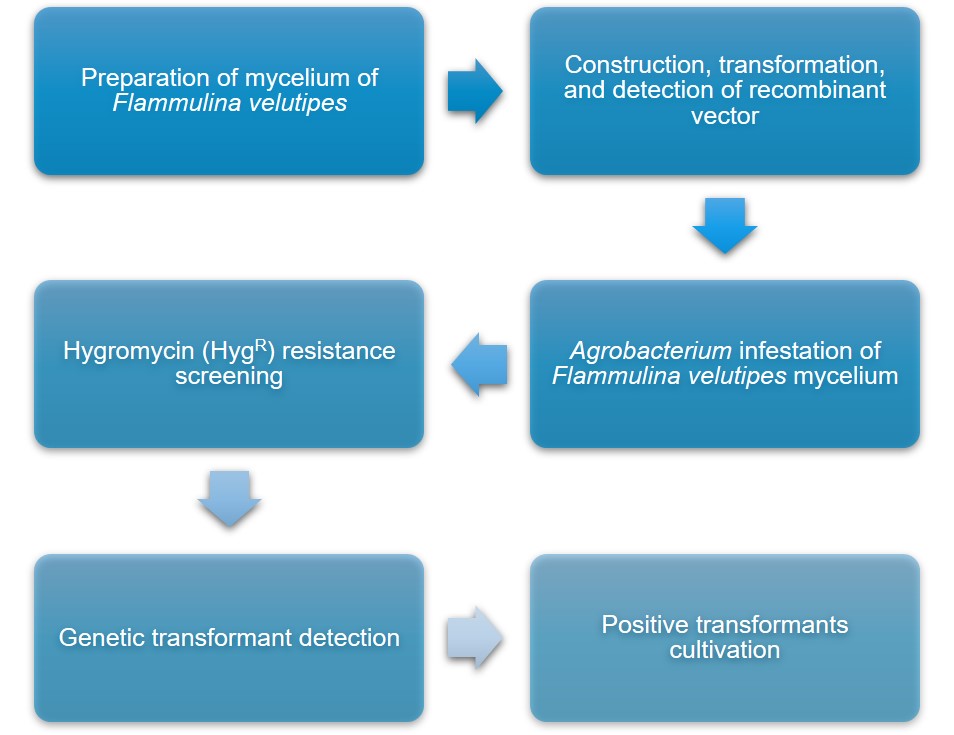Flammulina velutipes belong to Basidiomycotina, Agaricomycetes, Agaricales, Physalacriaceae, and Flammulina. It is a low-temperature wood-rotting fungus that does not contain chlorophyll and cannot produce carbohydrates itself, so the organic material required for its growth process mainly comes from the culture medium. It has a wide range of growth in nature and can be cultivated artificially. It contains many kinds of bioactive substances, such as polysaccharides, fire mushrooms, fire mushroom toxins, etc. It also contains proteins, sugars, vitamins, and other nutrients, which can regulate human metabolism and strengthen the human body, so it has a high medicinal value.
The main advantages of using Flammulina velutipes as a new genetically engineered receptor to produce the desired exogenous protein are safe for consumption, strong exogenous protein secretion ability, small genome, and easy genetic manipulation. The exogenous protein expressed by using Flammulina velutipes as a new receptor bacterium is safe, low cost of production and easy to It is easy to be produced on a large scale. Lifeasible can be efficiently transformed using the Agrobacterium-mediated transformation system for Flammulina velutipes. We use Agrobacterium LBA4404, EHA105 (RifR), GV3101 strains to mediate transformation into Flammulina velutipes mycelium, use gpd promoter to construct expression vectors to transform Flammulina velutipes, use Acetosyringone (AS) as an inducer in co-culture, we also provide several optional vectors, including expression vectors pgFvs, pCAMBIA1301, pCAMBIA1303, pBGgHg, p0390-AiH. During the process, we optimize the transformation screening conditions and screen the transformed Flammulina velutipes mycelia for positive transformants using Hygromycin (HygR) resistance. Later, we will compare the wild-type Flammulina velutipes to the transformed Flammulina velutipes for mycelial culture and phenotypic observation.
 Figure 1. Growth of transformants and wild types on medium containing hygromycin B. (Kanako H, et al. 2013)
Figure 1. Growth of transformants and wild types on medium containing hygromycin B. (Kanako H, et al. 2013)
The recombinant plasmid was transferred into Agrobacterium tumefaciens, and the target gene was transferred into Agrobacterium tumefaciens by Agrobacterium tumefaciens-mediated method using Flammulina velutipes mycelium as the recipient material. This is a very complete and mature system, and our technical team has a lot of experience.

Lifeasible uses T-DNA to integrate customer-specified target fragments into Flammulina velutipes for genetic transformation to obtain Flammulina velutipes strains with high expression of the target product, and we perform Hygromycin (HygR) sensitivity tests before the transformation experiments to ensure high transformation efficiency. Since the binary vector backbone and promoter, recipient material, Agrobacterium strains, Acetosyringone (AS) concentration, co-culture conditions, marker system, etc. may affect the transformation efficiency, we strictly control each key point based on our rich experience, which not only makes the transformation steps easier to operate and facilitate large-scale screening experiments, but also maintains a more stable and efficient Flammulina velutipes genetic transformation system.
References: